Clawing My Way Out
I hadn't been expecting it, but I was treated to a breakfast of egg sandwiches! I hadn't even met these folks 12 hours before, and was only led to them by their friend. What nice people!
Before leaving, I tried fiddling with Valeria's gear thing again, and this time, I got it working perfectly. Big scare for nothing. What a relief!
After 40 km or so was the big junction: Potosi or Uyuni. Potosi was a larger town, and that way appeared to have more mountains, and from what I had heard, more rain. Uyuni would be flatter and more remote. Uyuni it was. The sign wasn't clear, so I had to ask someone.
I stopped in a town 12 km later to buy some fruit, and a local struck up a conversation with me. And he did me a solid by telling me that the pavement ends in another 17 km, and stays that way until past Uyuni. No one else I had talked to had felt the need to mention that.
"Is it smooth?"
"Yes, smooth."
"And the road is firm?"
"Yes, firm."
"There are not many rocks?"
"No, no rocks."
Didn't sound too bad. I kept going. If he'd made it sound bad, I'd've turned around and gone to Potosi. It had only been 12 flat km, after all. Not too much to backtrack.
When the pavement stopped, it was horrible. Deep loose sand. I guess you could say it was smooth and there weren't rocks, but it certainly wasn't firm. Had I known this, I would've absolutely gone to Potosi. But now I was a few hours in. If I turned around, I'd lose more than half a day.
I found a construction worker and asked,
"How many more km of construction?"
"From here to Uyuni." (Lie)
"So from here to Uyuni, it is like this, the same?"
"Yes, the same." (Lie)
"I don't mean how long no asphalt, how many more km of construction?"
"Until Uyuni." (Lie)
"So there are machines and equipment all the way to Uyuni?"
"Yes, all the way." (Lie)
After I pressed him, he told me it gets better once you get to the next town, which it did. He also said the town was 15 km away. (Lie)
The construction only lasted another km or so, and afterwards, the sand was only maybe 1 cm deep, over firmer gravel. It was still slow going, and twice I skidded out of control. One of those times, I didn't get a foot down in time and crashed.
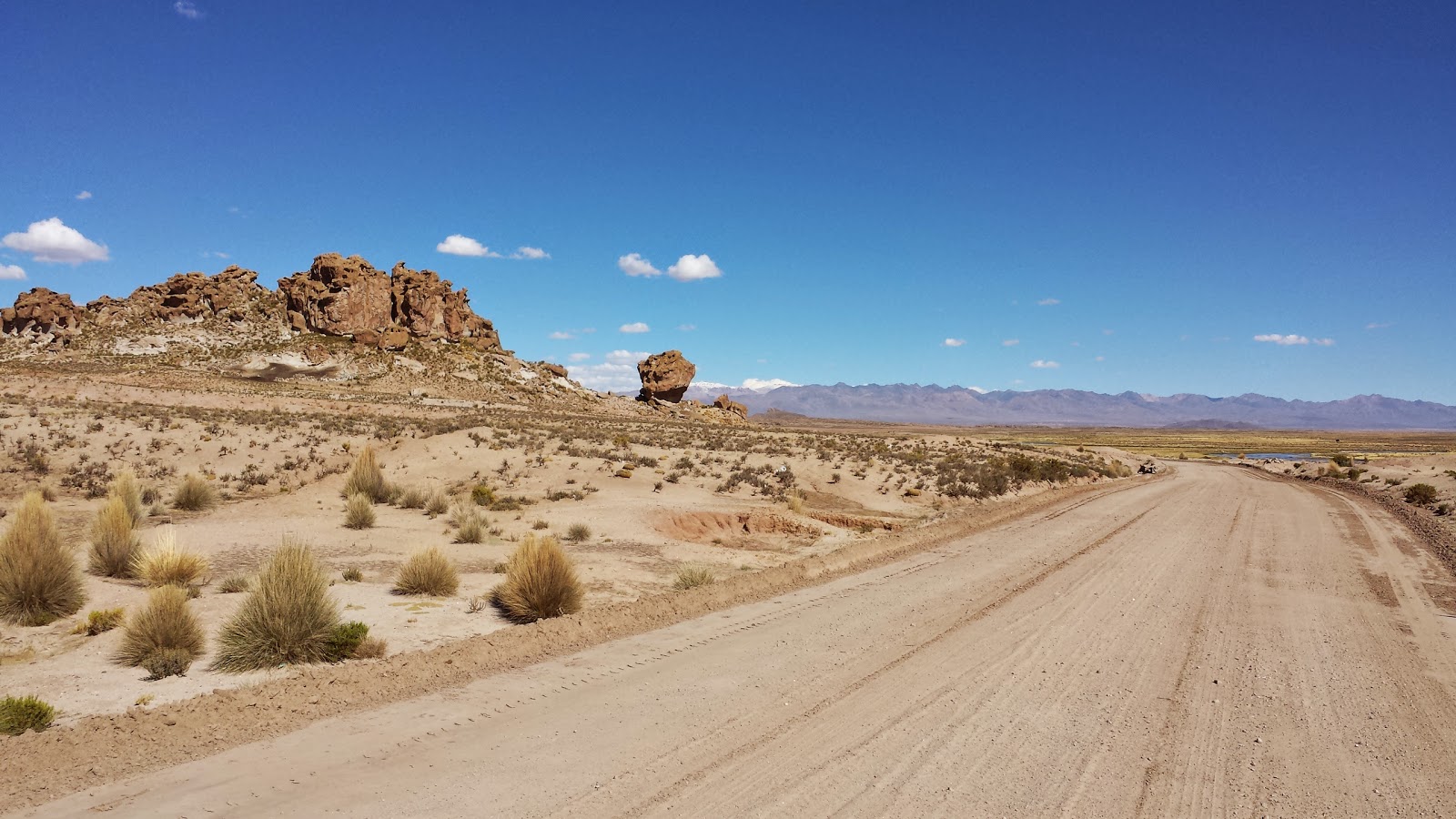
I stopped in the town for lunch and switched Valeria's tires to the big fat ones I'd been saving for the Carretera Austral. Right away, I noticed while mounting Valeria that she was now a little higher off the ground.
The tires made a difference, but it still wasn't easy. I was surprised how much pressure the tires took, and the ride wasn't cushioned like I'd imagined it would be. But I got better traction.
Only a little bit past town, the highway was all but paved. Rugged, poorly-done pavement, covered with a thin layer of sandy gravel. About once per km, there was a huge pile of dirt all the way across the highway, blocking progress. Apparently they don't want people driving on the pavement before it’s finished, even though it’s in useable condition. Instead, we were supposed to use the path off to the side, which was loose sand and mud. Yeah, no. Each of the roadblocks had a groove in it where motorcyclists had thought the same as me. I happily pedaled up and over them.
Later, the previously OK highway regressed to a sandy track only one lane wide. When it wasn't soft sand, it was a washboard surface, and Valeria hit the bumps hard. I was still swerving a little in the worst parts. In a few moments of weakness, I considered trying to hitch a ride the next time a car came by, which was only once every half hour or so. But I realized there would probably be some parts of the Carretera Austral that are just as bad, and I might have worse conditions compared to this warm sunny day. If I couldn't handle this, maybe I should go home.
Just before reaching the first town I'd seen in hours, the asphalt returned. Hallelujah! We were still supposed to stay on the crappy side road, but like before, no. I flagged down a group of motorcyclists going the other way and asked them,
"How is the road to Uyuni? Like this?"
"In parts."
"How much? What percent?"
"The majority is like this."
Niiiice.
I passed through a piece of crap town where the roads were even worse than everything I'd dealt with all day. Was glad to get the hell outta there.
A little later, I found more construction and thought I'd ask the workers about the highway ahead.
"From here to Uyuni, the majority is like this," I gestured to the asphalt we were on, "or like that?" I pointed to the crappy side road.
"Like that."
"Are there mountains between here and Uyuni?"
"Yes, lots. You will be climbing."
Not at all what I wanted to hear, but if it's the truth, I'm still glad I know.
I continued a little longer and pitched my tent only about 100 m off the highway, in plain sight, since there was absolutely nothing to get behind. There had only been one car in the last hour, and now it was only half an hour before sunset. Anyone who would drive this highway at night must have a death wish.
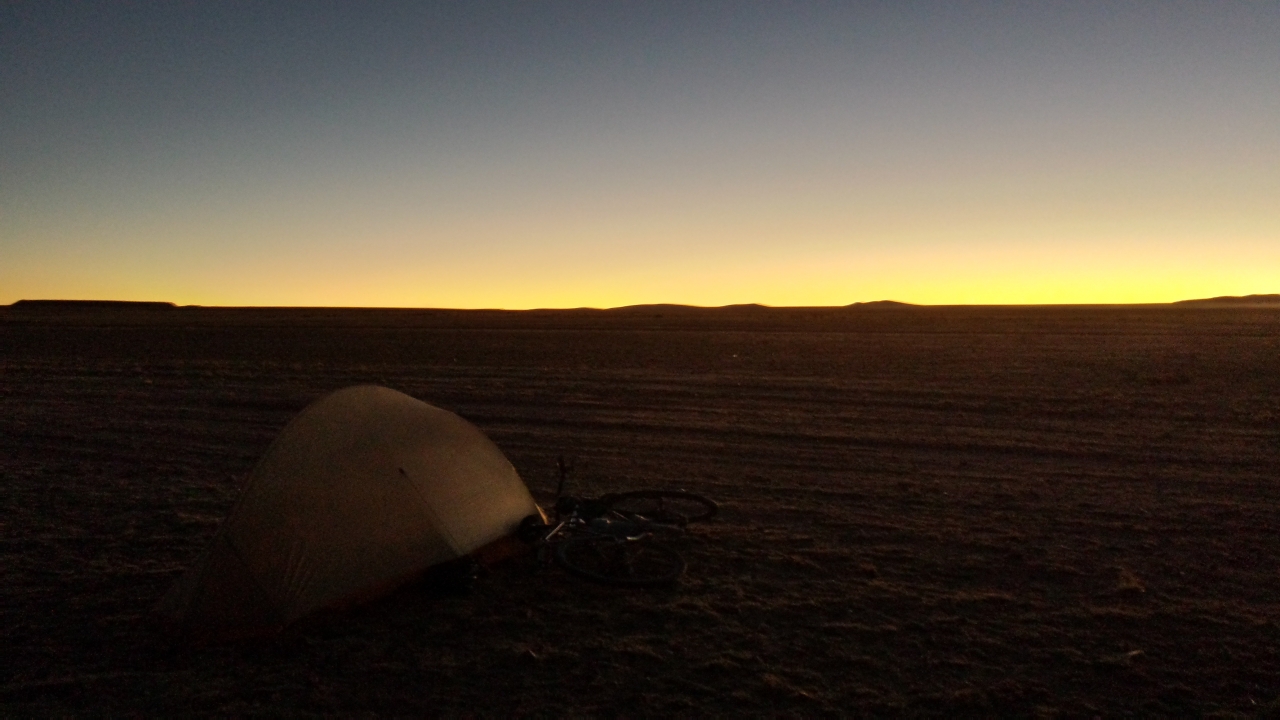
Almost as soon as the sun went down, the howling wind stopped completely. That happens around here, and I find it weird. But this time, I was camping out in the middle of nowhere, and there wasn't any highway traffic, none whatsoever. It got quiet. I don't think I've ever experienced that kind of silence before. It was to the point that I felt guilty making any movement because that made such a ruckus.
I liked it.
It was a clear, moonless night, and I made it a point to get out of my tent to look at the stars. Holy crap...
The Milky Way was more than clearly visible, even though it was relatively low on the horizon. It just so happened to be in front of the opening of my tent, so it was the first thing I saw.
I don't believe I've ever seen so many stars. I couldn't pick out any constellations. I'm not sure if that was because in the southern hemisphere, I could no longer see any of the ones I know, or because the sheer volume of stars, not to mention the intensity of them, made it harder for the constellations to stand out. And yet there was such a variety, in size, in color, in luminosity. It was bitter cold outside, and yet I stood there gazing in my underwear for not a short time.
Thousands of years ago, people looked at the night sky and they were so struck with awe and wonder that they made the stars into gods, built temples for them, and composed some of the most epic stories ever told. Now I look up and see the same lights in the sky, and I can't help but feel the same sense of wonder. And that makes me feel connected to something greater.
When I woke up in the morning, there was ice on the inside of my tent. That meant it was below freezing on the inside, and well below on the outside, probably -5 C or colder. By the time I started riding at around 7:30 AM, the sun had been up almost two hours, and I barely needed gloves. It warms up fast in the desert, and at high altitude. I'm enjoying the extra hours of daylight as I head south.
The road stayed half-decent for a while, that packed gravel stuff on the closed roadway, with the open-to-traffic frontage road still a piece of crap. The good surface was present for at least 90% of the day! Except...
There was an incomplete bridge about once per km. Almost all of them didn't have a path around (you're supposed to be on the crappy frontage road anyway). Squarely in the desert, the ground was all loose sand. The frontage road was too, for the most part. Time after time, I had to stop, and walk around. Stop, and walk around. Stop, and walk around...
I probably spent almost as much time walking as I did riding, and it was still better than trying to ride on the sandy frontage road.
Funny thing, but for all these bridges they're building, I didn't see a single river, or even a creek.
Late in the day, I was only about 25 km from my destination. I asked a construction worker how many more incomplete bridges there were.
"One." (Lie)
"One? That is all?"
"Yes, one." (Lie)
"So if there is more than one, you are not honest."
"No, no, only one." (Lie)
"Good."
"Two." (Lie)
"Ohhhh, there are two! The truth?"
"Yes, two, there are two." (Lie)
"So there are three, or four?"
"No, only two." (Lie)
"Why are you not honest? If there are two, why do you tell me one?"
"Two, only two." (Lie)
I tried to get him to tell me why he said there was one. I wanted him to at least own up to being a liar. It might be the first time that's happened in Latin America. He always responded by smiling and saying there were two. (Lie)
Then he told me there were ten. (Lie, but closer to the truth)
"Ten?!? Why are you not honest? What is the truth? One, two, ten?"
He explained that there were ten bridges, but only two were incomplete. (Lie)
"Because you are not honest, I do not believe you, and you are unuseful." I left.
Within 1.5 km, there were three incomplete bridges. He had said there were only two in the next 25 km. After the fourth time I had to dismount Valeria and walk around, I stayed on the frontage road (there wound up being over a dozen incomplete bridges). It was worse going and probably not any faster than stopping and walking around, but at least I knew what was coming, and no one was lying to me about it.
As I approached Uyuni, I could see the famous salt flats, but never got up close to them. The center road turned from packed gravel to asphalt, and I switched over to it again. There were, thankfully, no more incomplete bridges.
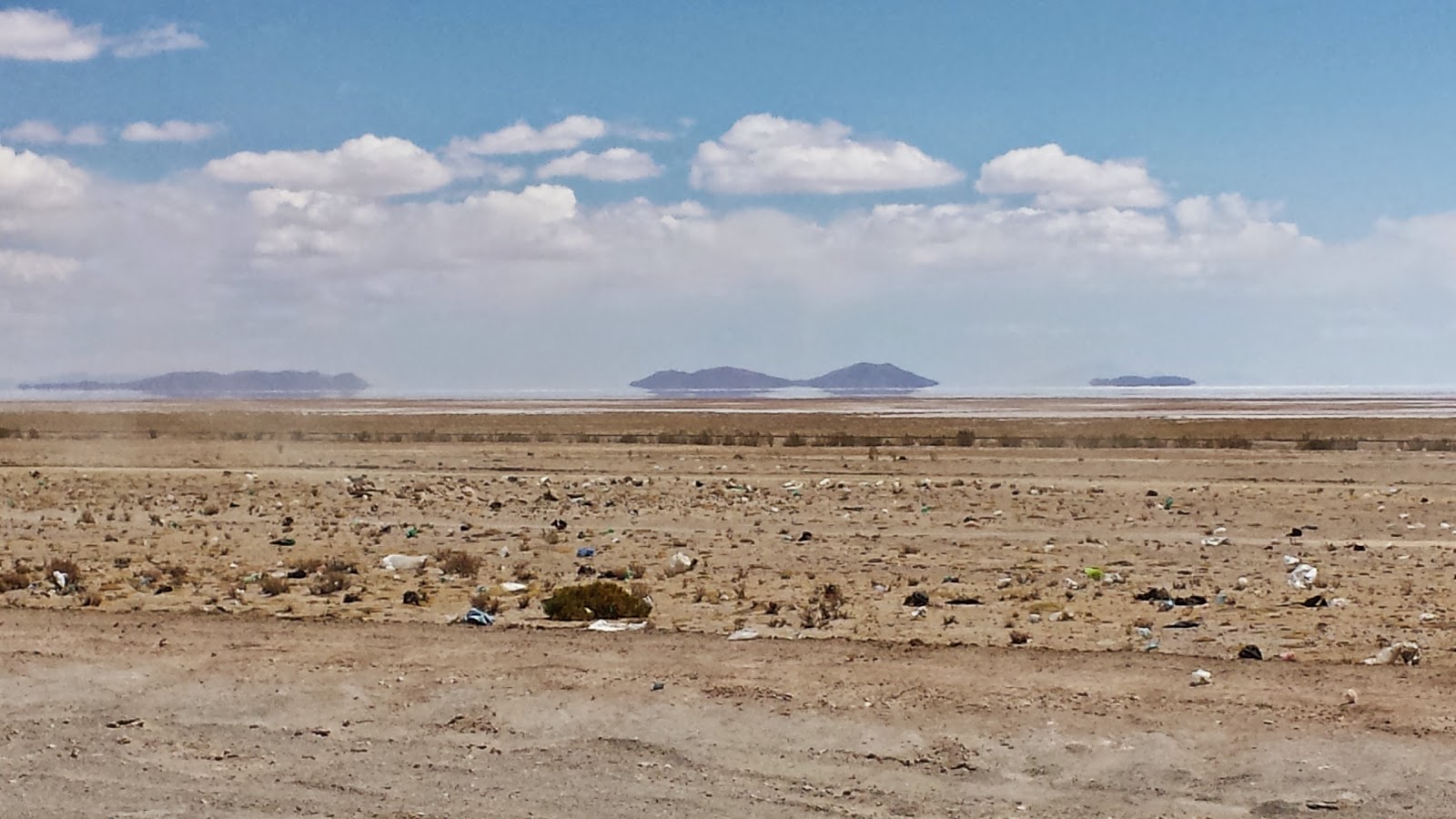
Only a dozen km from Uyuni, I saw another cyclist going the other way, on the frontage road. Stephan, from France, was headed to the salt flats and planned to ride across them the next day. Despite being French, he lived in Tokyo now and was married to a Japanese woman. She had wanted to come with him on the trip, but he refused! He had started in Buenos Aires and zig-zagged across South America for two months, but was now at wit's end and planned on flying home from La Paz.
Stephan especially wanted me to go ride the salt flats with him, both for my own sake and also because he thought it would be more fun with a partner. I considered it, but decided I'd had it with riding off-road for a while. And I didn't want to spend any more time in Bolivia than I had to, nor pay for anything related to tourism, not after they ripped me off at the border. I declined and pushed on to Uyuni.
Uyuni had been described to me as exceedingly touristy (for the salt flats), but I mostly saw a typical Bolivian dump with one block of good restaurants, which I didn't eat at. There were a lot of Europeans on that one block.
The road from Uyuni to Tupiza had been described to me as anything between "similar to the frontage road" (which was crap, but technically rideable), to "impassable by bicycle." Stephan himself had taken a train to avoid it. With that description, I decided it would be best to take a bus.
I felt bad about it because it means I'm not riding every last km, but I've skipped something before: the Darien Gap. And for essentially the same reason: there is no useable road. There are, in fact, dirt paths in the Darien Gap, but it's still considered innavigable, and no touring cyclists traverse it. I saw this the same way.
Had someone told me this when I mentioned I was going this way, before I was over 100 km in, I would've gone the other way through Potosi, a little longer and all paved, and wouldn't have skipped a thing.
If I had any doubt that taking the bus was the right thing to do, the bus ride confirmed it: the bus shook loudly and violently the entire way; had it been an airplane, people would have been terrified for hours on end. 200 km took nine hours. Nine. That's about the same pace I hold on pavement.
I met a few cool bus-backpackers on the way, an Irish couple named Orla and Gehr, and an Australian whose name I never learned. She continued to Villazon, while the Irish couple stayed in Tupiza, at the same hostel as myself. They're both teachers taking a year off, and Orla teaches Gaelic, of all things!
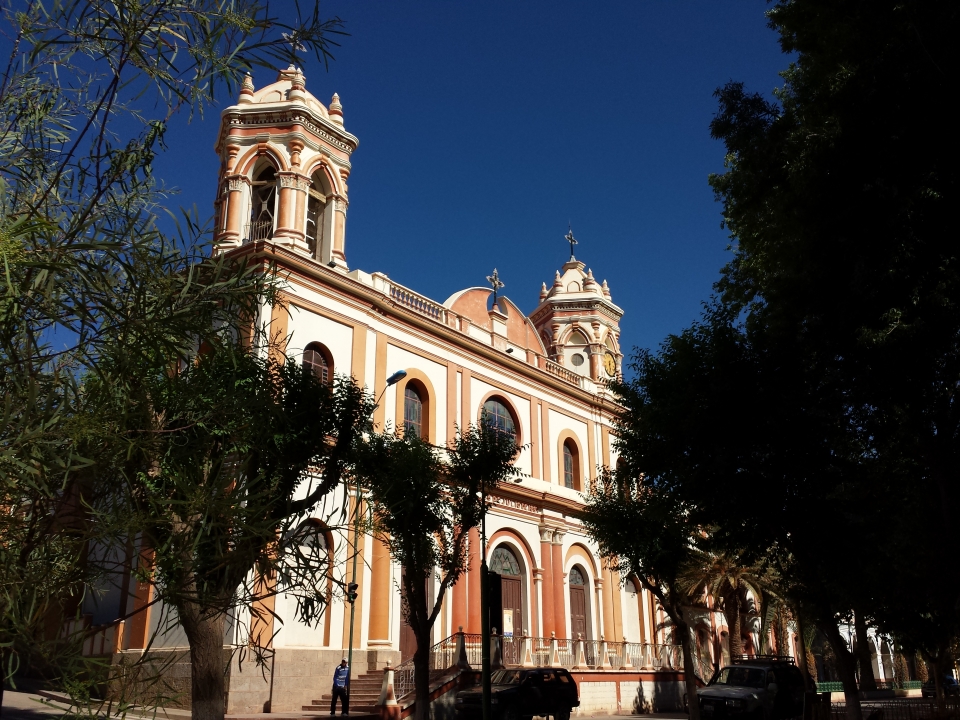
The Irish and I spent a good chunk of the afternoon together, taking over an hour to find a place open for lunch in mid-afternoon. We finally found a place serving something like barbecue, and...my goodness. It was goooood. Supposedly Argentina is famous for barbecue, and I'm not even there yet.
The area around Tupiza is referred to as the beautiful valley, and compared to anything else I've seen in Bolivia, I agree. I still like the desert's rugged beauty. For at least a little while, I was following the trail of Butch Cassidy and the Sundance Kid. I thought that was cool, especially having seen their favorite bar in Laramie, WY, four months ago!
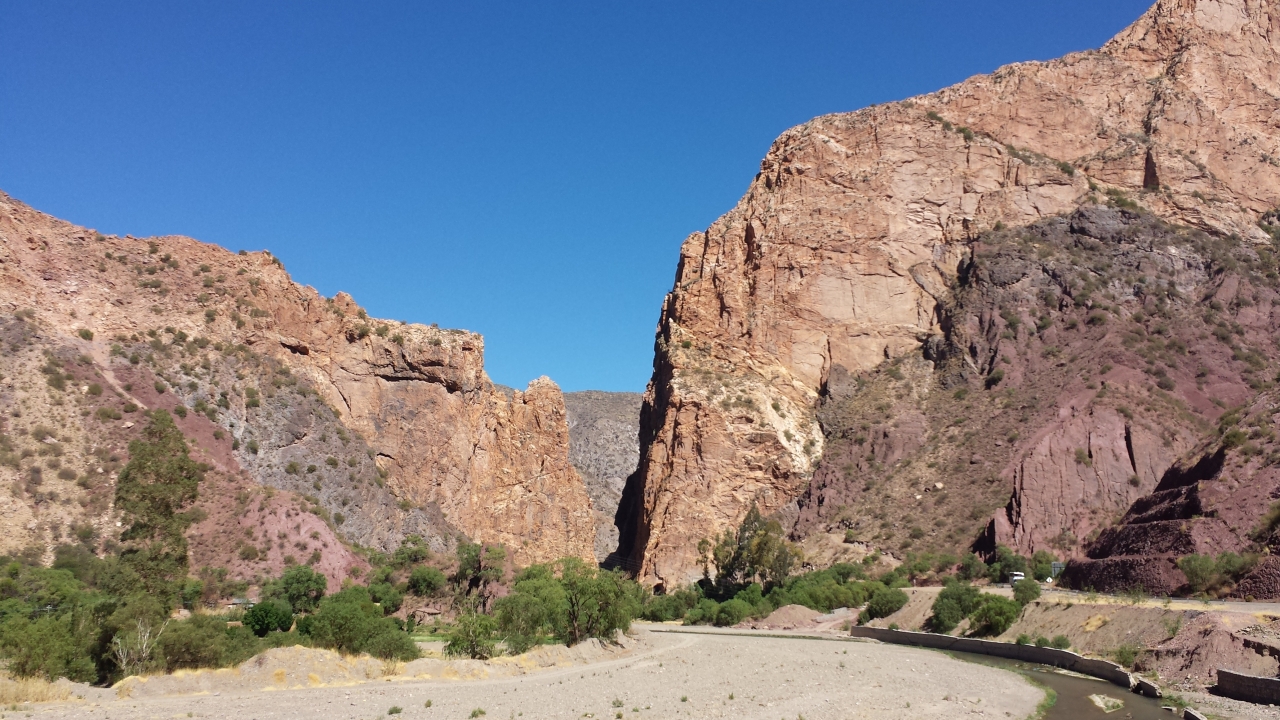
The road eventually straightened and flattened out for the last push to Argentina. Along the way, I saw a dustdevil that was large enough, tall enough, and organized enough that it may have qualified as a bona fide F1.
I quickly made my way through Bolivia's border town and to the Argentinian border, glad to put this shithole behind me. The border control was almost exclusively Argentinian personnel, which I took as a good sign. I went to the first window, handed them my passport, and without saying a word, he stamped it and handed it back within about eight seconds. Looks like Bolivia's done! On to the Argentinian window!
Just as I was approaching the window, I saw two Irish bus-packing girls.
"Quick and painless," they assured me. Yessss! After the ordeal Bolivia gave me last time, I was looking forward to it.
Turned out Bolivia wasn't done.
"You are American?"
"Yes."
"Where is your exit paper?"
"Exit paper?"
"Bolivia requires an exit paper. I can't let you into Argentina without it."
"Where do I get it?"
"You must pay, on the internet."
"On the internet? I can't pay live?"
"No, only on the internet."
"Where is a computer I can use?"
"There is an internet cafe four blocks that way."
I shit you not, Bolivia's national policy is for you to find some internet cafe, somewhere, and go online to pay the exit fee. They do not tell you this ahead of time. They do not have computers available at the border. They don't even bother to put their own office there; they rely on Argentina to tell you this. And they don't tell you what site to visit.
The nearest internet cafe was, of course, six blocks from the border, not four. When I got there, I asked if the owner knew what site to visit to take care of the exit fee. He thankfully did, but explained that his internet cafe had a slow connection, and sometimes the form doesn't go through properly. He offered to walk me to another one, two blocks farther from the border.
Bolivia had already charged me $165 (American dollars) to enter the country, ripping me off $30 in the process by giving me incorrect change. Now they were forcing me to pay another $160 to leave. Put together, I think that's about eight times more than I spent in Bolivia otherwise, in the span of a week. They only do this for Americans, Canadians, and Australians. I was furious.
Then I found out this was a "reciprocity fee." In other words, Bolivia charges Americans this much because the United States charges Bolivians this much. That made me ashamed of my own country. Let's cut the crap and be nice to each other, huh?
Once I finally had a printed receipt, crossing the border was a snap. Only cost me $160 and at least an hour of my day. I still had 100 Bolivianos (about $15), and was surprised to see that there was no one, not one person, changing money on the Argentinian side of the border. Maybe I could spend the money in the border town?

It was Sunday, and all the shops were closed. It looked like a ghost town. I figured I better at least withdraw some cash now, because chances are I wouldn't see an ATM for a few days. I found a tourist info center and asked where an ATM was. Somehow she gave about five consecutive responses that didn't have anything to do with finding an ATM, or even a bank. I don't know how I confused her, because with my limited vocabulary, the only things I was able to say were things like "Where is an ATM," or "I need to use an ATM," or "I want to know where is an ATM." After several tries, she finally gave a straightforward answer. I have no idea what the difference was.
Just as I was leaving town, I found the open street market. So this is where everyone was! Half of the area was full of canopy tents, and most people were selling hard goods like furniture or clothes. Nothing I could use, except the ice cream vendor, who wouldn't stop honking a bike horn, which meant they're not getting my business. I found a fruit stand, but they wouldn't take Bolivian money.
I reluctantly headed over to the other half of the market, full of corrugated tin shacks and pumping out an unreasonable amount of noise. I had no idea what was going on there, but I might as well find out if it's something where I could blow my money.
Each one was a cafe, most of them selling only one or two things. All of them were playing music at physically painful volumes, and that was before I even went inside. The result was that you couldn't hear any one song, so what was the point?
I finally found one that wasn't playing music. Not even caring what they served, they won by default (also because they said I could pay in Bolivian money). What I got was an ENORMOUS amount of chicken, rice, fries, and a salad. I threw a beer in there for good measure. When it was time to pay, they told me they couldn't give change for the amount I had, which was a single 100 Boliviano bill, about $15. I told them to keep it. The meal would've been worth $15 in some states, and at least I got something.
Already late in the afternoon, I put the border town behind me and pedaled across the flat plains of Argentina. There was a notable tailwind behind me. After an extended break, I felt fresh, even though I'd already done 90 km today. I pushed on until the sun was on the horizon. I could've found an earlier place to stop, but when you feel good and you've got a solid tailwind, you use it.
I wound up in a small town and had to ask around a while before I found a good place to sleep: in a random unlocked room in a virtually abandoned bus terminal. Buses still drop off at that location, but that's it. The building appeared to no longer be in use.
I was glad to get Bolivia behind me. If I wanted to, I could stay in Argentina almost the entire rest of the ride. After the last two border crossings, I might be encouraged to avoid them whenever possible, so I'll think about it. But from what I understand, Argentina and Chile are more, let's say, enlightened societies. For a long time, I've been pointing to this moment as the point where it gets better, and I still think it does.
The best is yet to come!
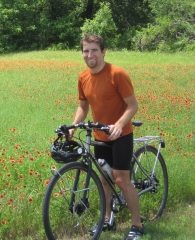


 June
June

